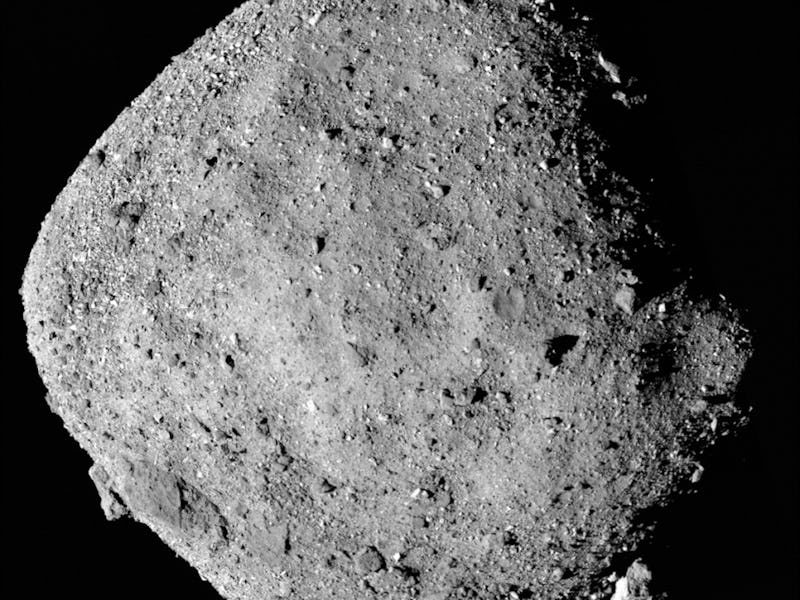New asteroid Bennu findings support theory of how life may have traveled to Earth
These rocky objects may have carried the building blocks of life to our planet.

On September 8, 2016, NASA launched a small spacecraft towards one of the most ancient objects in the universe — Bennu.
OSIRIS-REx has orbited the asteroid Bennu since December, 2018 and is scheduled to snag a sample of the flying rock later this month before returning it to Earth. And as the spacecraft gears up for the sample-return mission, each close flyby of the asteroid provides new and exciting clues to how the Solar System formed.
The mission may also inform our own origin story. In a series of six papers published Thursday in the journals Science and Science Advances, researchers provide new insights about Bennu and detail the discovery of organic material on the asteroid.
Asteroids are believed to contain clues to some of the lingering cosmic mysteries as they are made up of the leftover material from the birth of the Solar System.
Amy Simon is a planetary scientist at NASA's Goddard Space Flight Center and lead author of one of the recent studies on Bennu.
"The reason there’s so much interest in asteroids is a lot of them are very primitive, from when the Solar System formed, and they didn't change with wind and water, or weather like on Earth," Simon tells Inverse. "They're still more pristine than anything you could find in the universe."
Bennu is classified as Near-Earth Object (sometimes called an NEO), and orbits around the Sun every 436.6 days. Bennu is a rare, B-type asteroid. Asteroids are divided into different types based on their chemical composition, and B-type denotes the most primitive kind of asteroid — in other words, Bennu has not significantly changed since it formed 4 billion years ago. It also means it contains a lot of carbon material, organic molecules, and amino acids — considered to be the building blocks of life.
A view of the surface of Bennu, which contains signatures of organic material and hydrated minerals.
Simon recalls that when OSIRIS-REx first approached Bennu, scientists quickly saw evidence of hydrated minerals embedded in the asteroid's rocks. These typically occur when water is added to the crystal structure of a mineral. The team of scientists also found signatures of carbon-bearing material all over the surface of Bennu.
In this study, Simon and her team used a method known as infrared spectroscopy to study these signatures, which analyzes the interaction of infrared light with molecules in order to identify the chemical composition of a given material. They found that carbon-bearing material, including organic molecules and carbonate minerals, were widespread across the asteroid, with concentrated veins of material on a few of Bennu's boulders.
"When we started to map it out, we found signature of carbon-bearing material all over the surface," Simon says. "It doesn’t matter where we take a sample from."
A life well traveled — Some scientist believe that water and other organic material traveled to Earth by way of meteorites which fell to the planet billions of years ago amidst the chaos of a young Solar System. Asteroids provide a crucial window into the material that existed in the early Solar System — and provide clues as to how some of it may have made its way to Earth.
Evidence of hydrated minerals on a dry asteroid brings together one part of the story of how water may have found its way to Earth, while the organic material also seen on Bennu is a good indicator that the asteroid harbors the building blocks of life.
"Everyday we have stuff raining down that we don’t see," Simon says. "But early on in the Solar System, there would’ve been a lot more of these collisions."
Simon and her team are eagerly awaiting the sample-return mission, which is scheduled for September, 2023. Once they get the sample, it will enable the scientists to verify their results.
"The nice thing about this mission is that we have ground based observations, observations from space and a sample," Simon says. "We’ll be able to tie all these things together in a way that we haven’t been able to do for other objects."